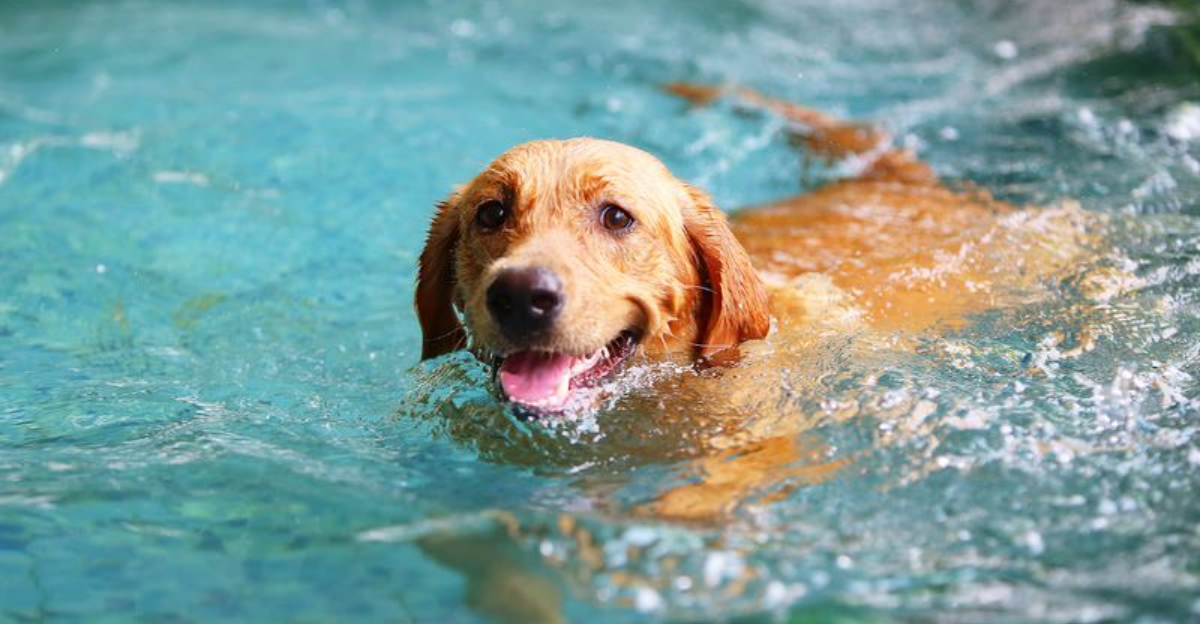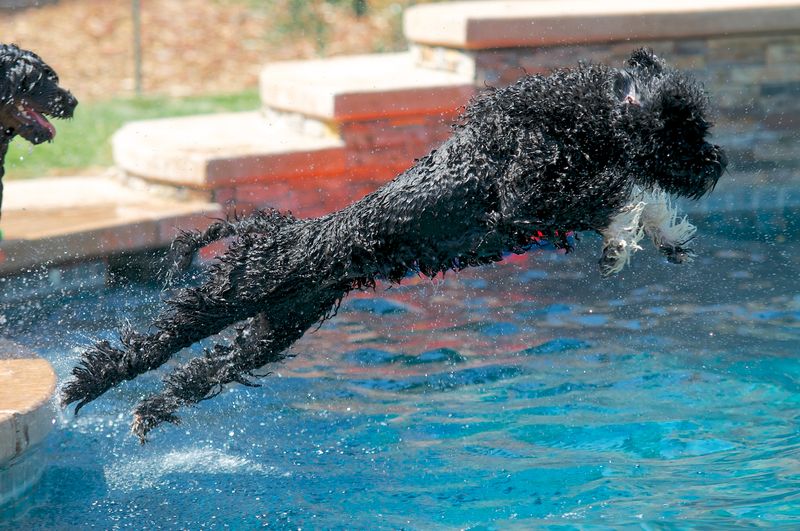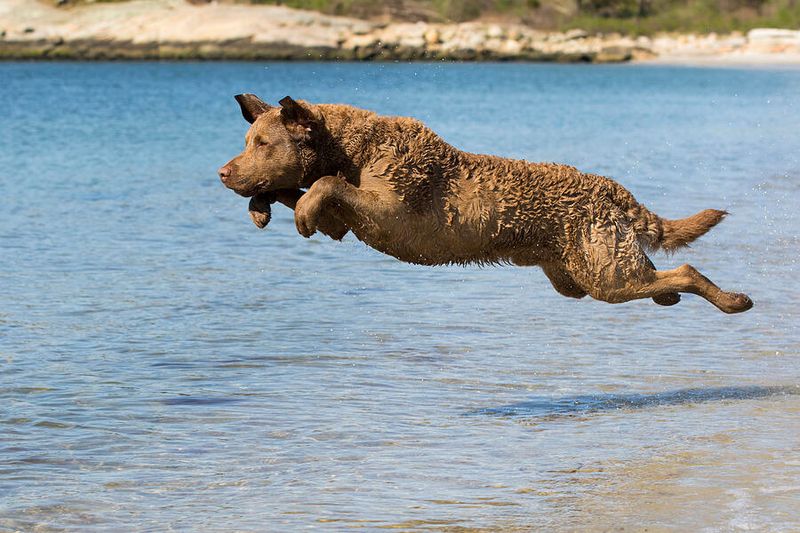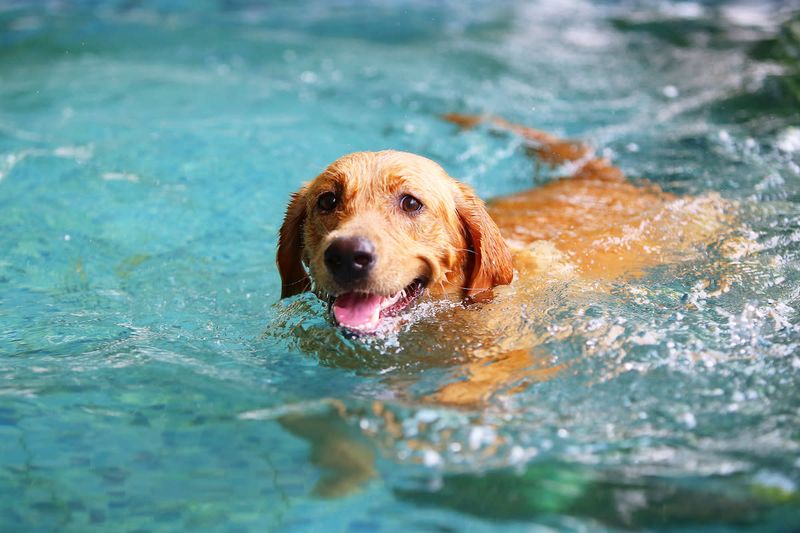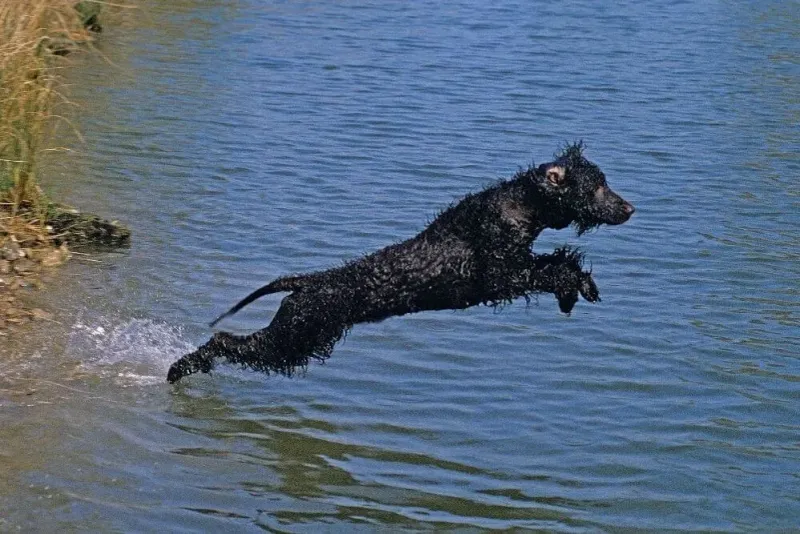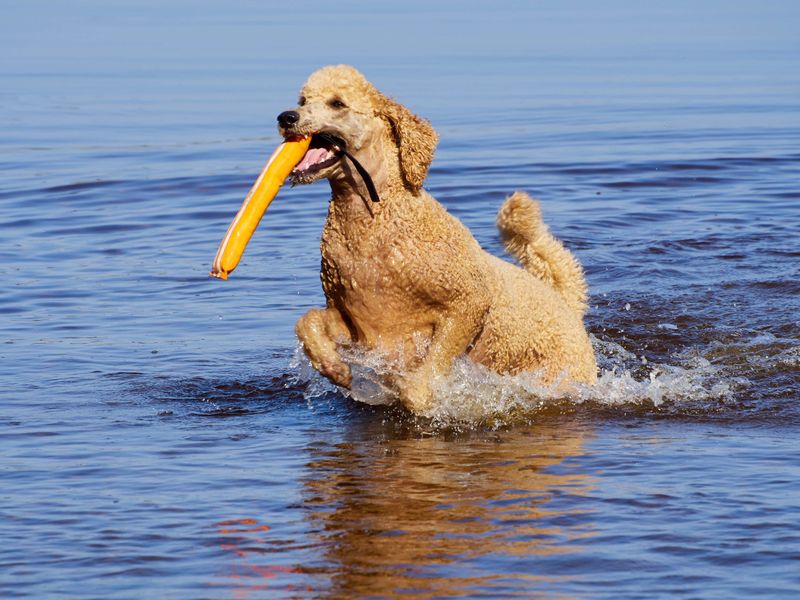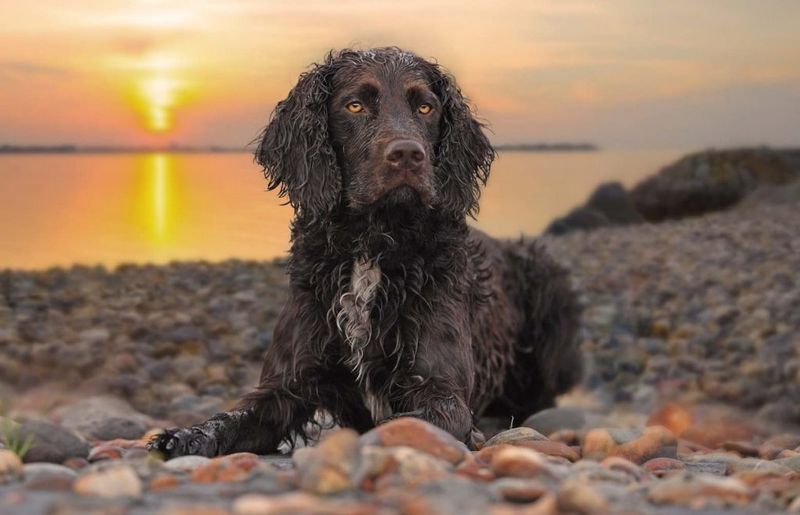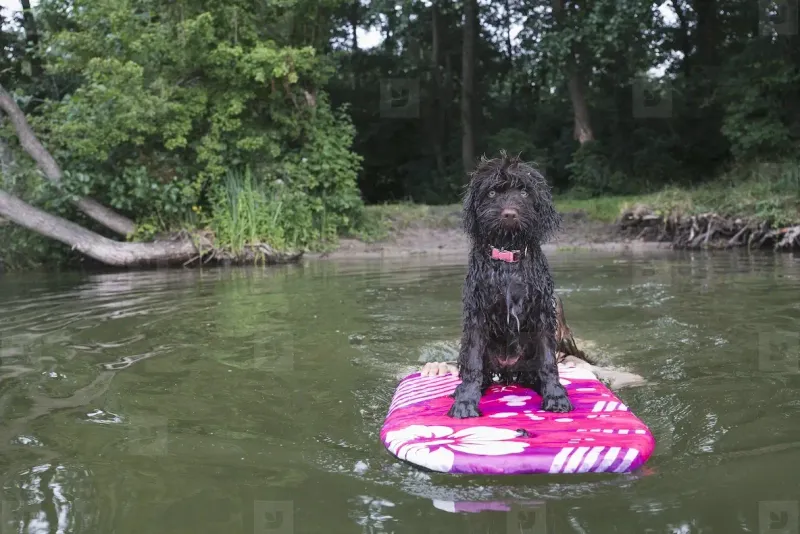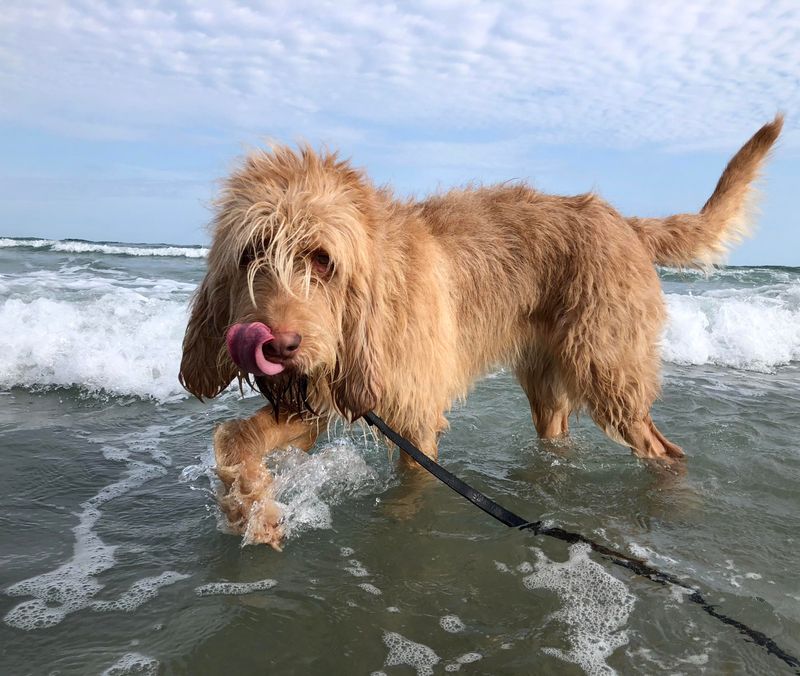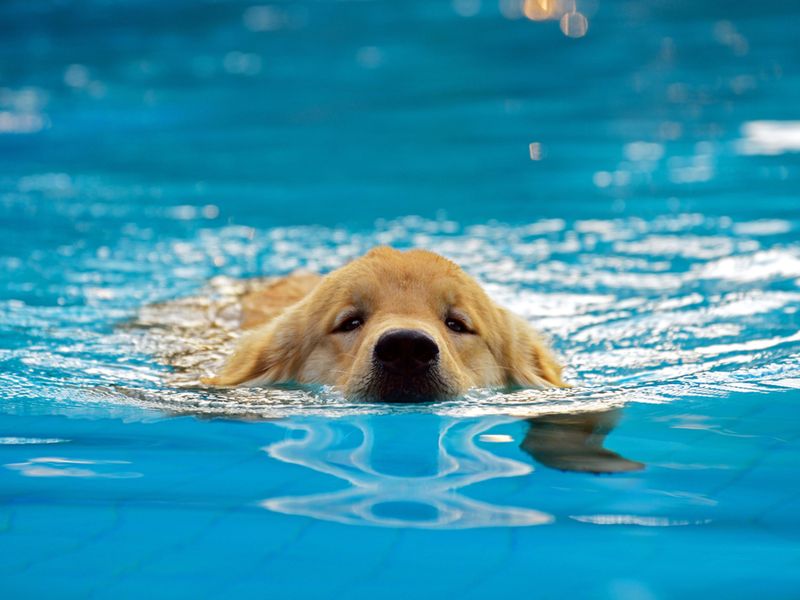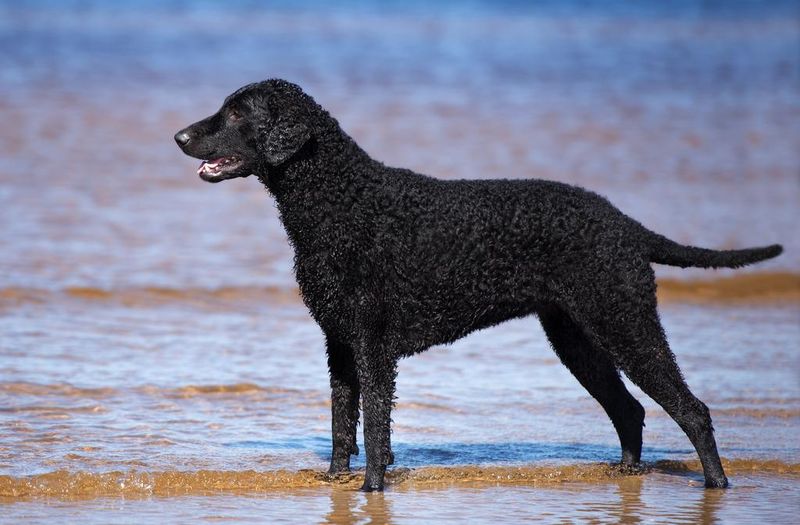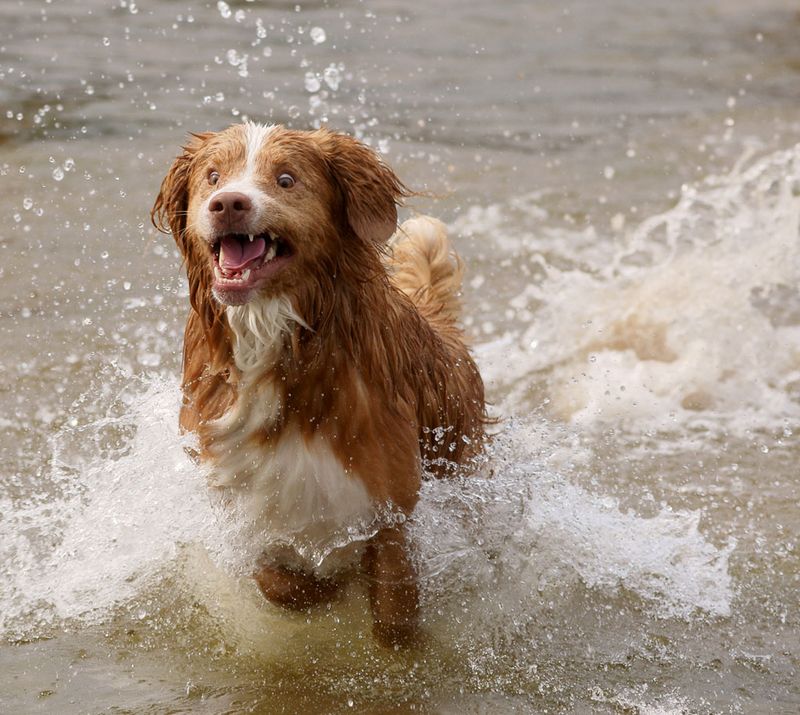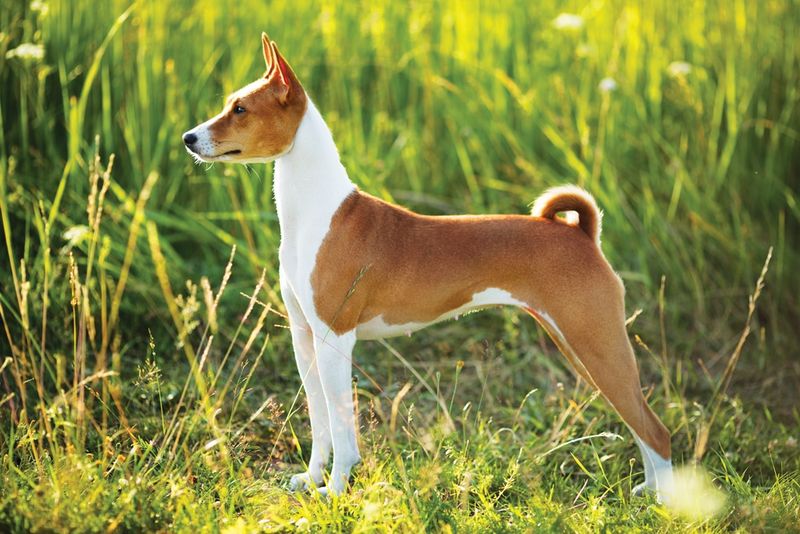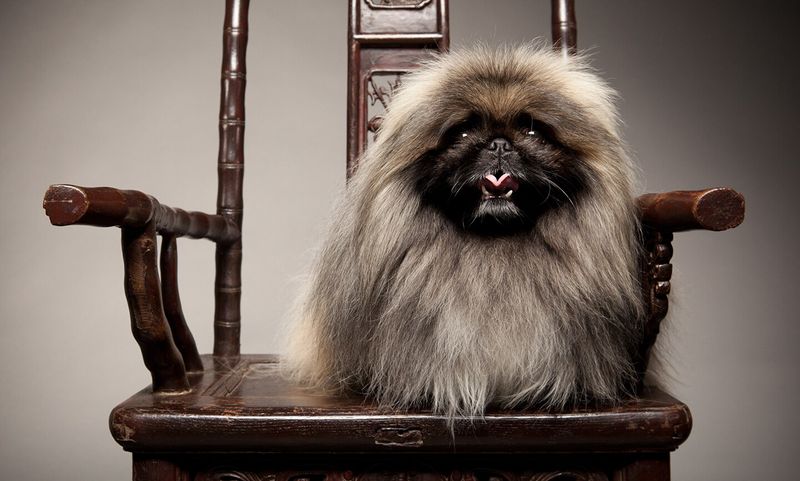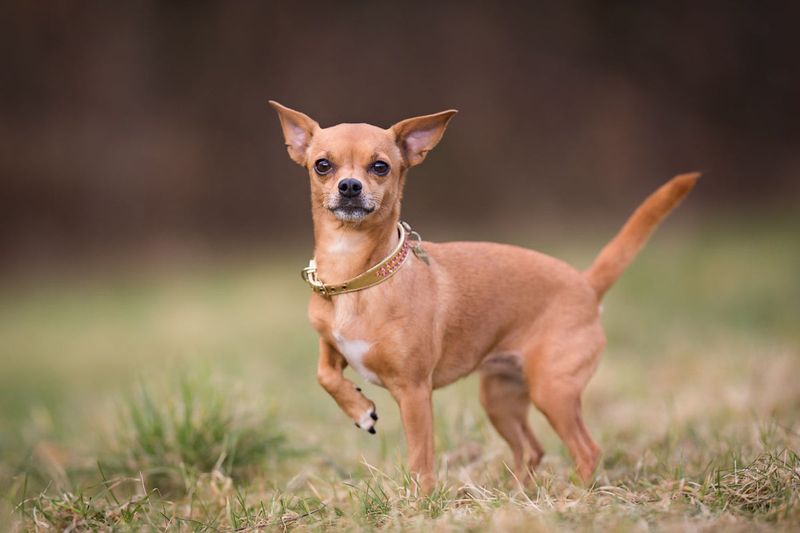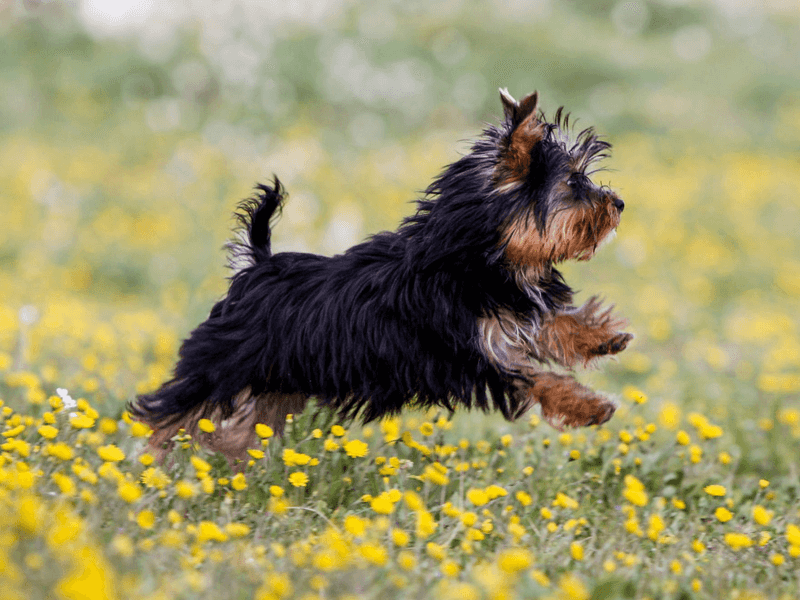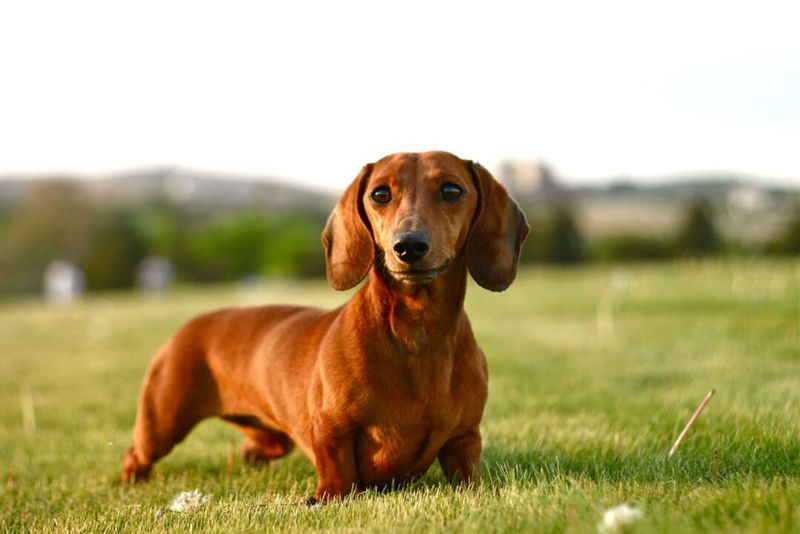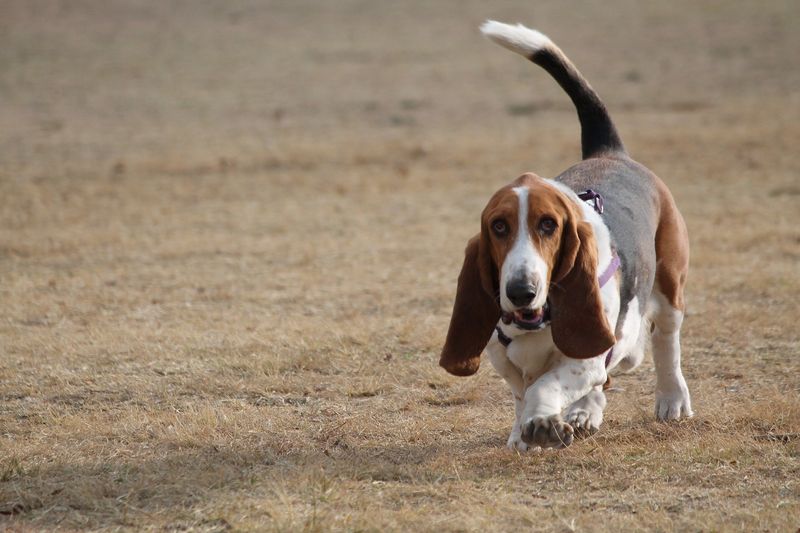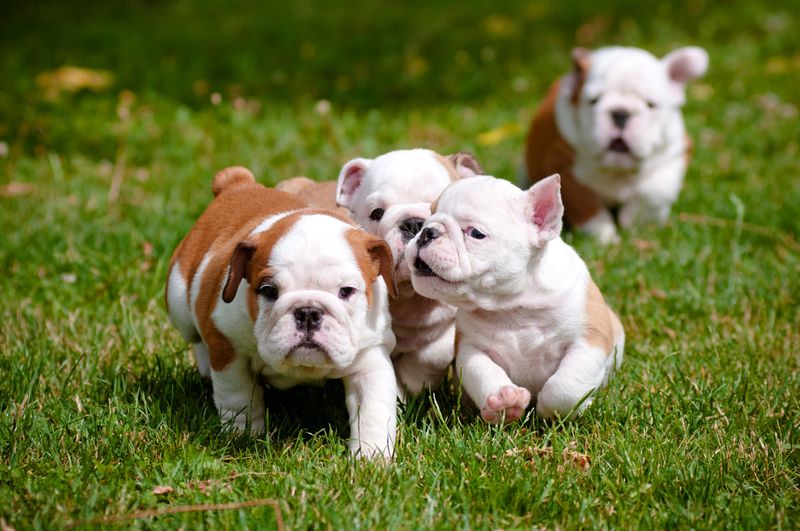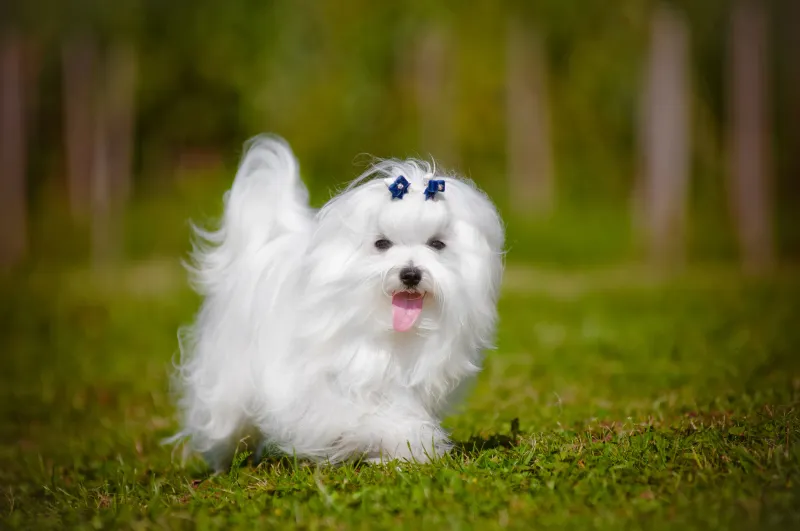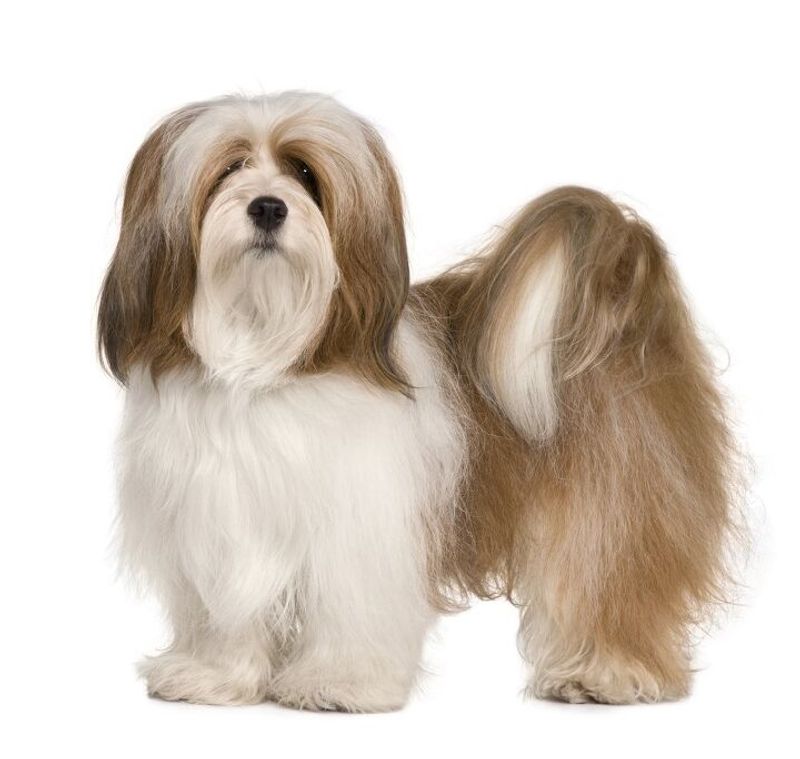Explore the world of dogs and their relationship with water. While some breeds revel in splashing and swimming, others prefer to keep their paws dry. This list delves into 13 breeds that thrive in aquatic environments and 11 that would rather avoid it. Discover unique traits, anecdotes, and why each breed has its preference.
Newfoundland
With a heart as big as its paws, the Newfoundland is every child’s gentle guardian. This breed is famed for its swimming prowess and is often referred to as the ‘lifeguard dog.’
Newfoundlands possess a strong build and a thick, water-resistant coat. They are natural swimmers, known to rescue people from drowning.
Their calm demeanor and patient nature make them wonderful companions both in and out of the water. Historically, these dogs were indispensable to fishermen, assisting in hauling nets and saving lives during sea mishaps.
Portuguese Water Dog
Once a loyal companion to Portuguese fishermen, the Portuguese Water Dog is a spirited breed with a love for the sea. These dogs are highly intelligent and strong swimmers.
Their curly, dense coat helps protect them from cold waters. Energetic and enthusiastic, they enjoy tasks like retrieving gear and herding fish into nets.
Their adaptability and eagerness to learn make them excellent companions for water sports and adventures. Fun fact: This breed was nearly extinct in the 20th century but was revived by dedicated enthusiasts.
Chesapeake Bay Retriever
Known for its resilience and strength, the Chesapeake Bay Retriever is a breed designed for cold, rough waters. Their double-layered, oily coat provides insulation and repels water.
These dogs were bred to retrieve waterfowl under challenging conditions along the Chesapeake Bay. Their hunting instincts and determination make them adept at water-related tasks.
Their loyalty and intelligence are unmatched, making them ideal companions for outdoor enthusiasts. This breed’s history includes assisting hunters in retrieving duck and geese in icy waters.
Labrador Retriever
With an innate love for the water, the Labrador Retriever excels in all things aquatic. This breed is known for its webbed feet and water-resistant coat, making it an exceptional swimmer.
Labs are often associated with assisting in water rescues and are frequently used in search and rescue teams. Their cheerful disposition and boundless energy make them the perfect companions for water adventures.
Did you know? Despite its name, the Labrador Retriever actually hails from Newfoundland, where it was originally used by fishermen to retrieve nets and fish.
Irish Water Spaniel
With its distinctive curly coat and playful demeanor, the Irish Water Spaniel thrives in aquatic environments. Known for its agility and enthusiasm, this breed excels in water retrieving.
Their water-repellent coat and strong build enable them to work tirelessly in water. These dogs are versatile and energetic, often participating in competitive dog sports.
Despite their exuberance, they are gentle and enjoy family life. A fun fact: The Irish Water Spaniel is one of the oldest and rarest spaniel breeds, dating back to Ireland in the 7th century.
Standard Poodle
Often seen as elegant and sophisticated, the Standard Poodle is also an exceptional swimmer. This breed’s intelligence and agility are well-suited for water activities.
Originally bred in Germany as a water retriever, Poodles have a hypoallergenic coat that dries quickly. Their keen intelligence and trainability make them excel in various dog sports.
Poodles are not just show dogs; they have a rich history as working dogs, retrieving game from water. Charming and graceful, they are beloved family pets with a flair for fun.
American Water Spaniel
The lively American Water Spaniel is a versatile breed with a knack for swimming. Bred in the United States primarily for hunting waterfowl, these dogs are energetic and enthusiastic.
Their curly coat offers protection from cold and water. With a strong sense of smell and agility, they excel in retrieving games and field trials.
Affectionate and friendly, they are great companions for active families. Did you know? The American Water Spaniel is the state dog of Wisconsin, recognized for its contribution to the state’s hunting traditions.
Barbet
The Barbet, with its endearing personality and love for water, is a lesser-known gem. This French breed is characterized by its curly coat and cheerful disposition.
Barbets are natural swimmers and were historically used for retrieving waterfowl. Their gentle nature and intelligence make them suitable for families.
Despite being a rare breed, they are gaining popularity as companion animals. Fun fact: The Barbet’s name is derived from the French word ‘barbe,’ meaning beard, reflecting their distinct facial hair.
Otterhound
The Otterhound, with its distinctive appearance and joyful nature, is a breed built for swimming. Primarily bred for hunting otters, they have a hearty build and waterproof coat.
These dogs are known for their keen sense of smell and endurance in water. They often engage in water sports and outdoor activities.
Friendly and boisterous, they enjoy family life and outdoor adventures. However, the Otterhound is a rare breed today, with efforts ongoing to preserve its unique characteristics.
Golden Retriever
Possessing an exuberant spirit and love for play, the Golden Retriever is a favorite among families. Their affinity for water stems from their history as waterfowl retrievers.
Goldens are strong swimmers with a water-repellent coat. They are often trained for search and rescue missions and excel in obedience.
Their gentle and friendly demeanor makes them excellent companions for children. Interestingly, they originate from Scotland, where they were bred to retrieve game from rivers and lakes.
Curly-Coated Retriever
With a coat as unique as its demeanor, the Curly-Coated Retriever is a breed suited for water. Known for their distinctive curly fur, they are adept swimmers.
These dogs were originally bred in England for hunting and retrieving games from water. Their athleticism and endurance make them perfect partners for active owners.
They are intelligent and require mental stimulation to thrive. A fascinating fact: The Curly-Coated Retriever is one of the oldest retriever breeds, with a history dating back to the 1700s.
Nova Scotia Duck Tolling Retriever
Known for its vibrant personality and boundless energy, the Nova Scotia Duck Tolling Retriever is a breed that loves water. They were developed in Canada for tolling and retrieving ducks.
Their medium size and webbed feet make them excellent swimmers. Tollers use their playful antics to lure waterfowl within gunshot range.
These dogs are loyal and intelligent, excelling in various dog sports. Did you know? Tollers are often mistaken for small Golden Retrievers due to their similar appearance.
Basenji
The Basenji is a unique breed that prefers to stay dry. Known as the ‘barkless dog’ due to its yodel-like vocalization, this breed is not fond of water activities.
These dogs are independent and intelligent, often likened to cats in their grooming habits. They are agile and enjoy dry land pursuits such as running and playing.
Basenjis have a rich history, originating from Central Africa, where they were used for hunting. Their disdain for water is a notable trait, and they are more content exploring terrestrial environments.
Shih Tzu
The Shih Tzu, with its regal appearance and charming personality, is a breed that prefers to keep its paws dry. Known for its luxurious coat, this dog is more inclined to enjoy pampered sessions than water sports.
Shih Tzus are affectionate and sociable, thriving in indoor settings. They have a long history as companions to Chinese royalty.
While they may tolerate a bath, swimming is not their forte. Instead, they excel in providing companionship and showering their owners with love.
Pekingese
Aristocratic and dignified, the Pekingese is a breed that cherishes dry comfort. Their long, flowing coat and proud demeanor reflect their royal origins.
These dogs are loyal and brave, known for their independence. While they enjoy leisurely strolls, they are not suited for swimming.
Pekingese were bred as companions for Chinese emperors, and their preference for comfort over adventure is evident. They are content basking in the warmth of a cozy home rather than splashing in puddles.
Chihuahua
Despite its small size, the Chihuahua exudes confidence. This breed is not a fan of water, preferring to stay dry and warm.
Chihuahuas are known for their spirited personality and are often seen as lapdogs. They enjoy sunbathing and playing in dry environments.
Their origin traces back to ancient Mexico, where they were cherished companions. While they may not enjoy swimming, they are devoted and attentive pets, forming strong bonds with their owners.
Yorkshire Terrier
With its silky coat and lively spirit, the Yorkshire Terrier is a breed that prefers dry adventures. Known for its confidence and curiosity, this breed is more at home on solid ground than in water.
Yorkies are intelligent and bold, often participating in agility and obedience competitions. Their small size makes them ideal for urban living.
Originally bred to catch rats in textile mills, their ancestry is rooted in dry environments. Despite their size, they are feisty and full of character, making them delightful companions.
Pomeranian
With its fluffy coat and vivacious nature, the Pomeranian is a breed that enjoys staying dry. Known for their extroverted personality, these dogs are more likely to be found on a lap than in a pool.
Pomeranians are intelligent and enjoy learning tricks, thriving in active households. Their loyalty and lively demeanor make them excellent companions.
Originating from the Pomerania region, they were bred down from larger sled-pulling dogs. While their ancestors may have braved harsh weather, today’s Pomeranians prefer indoor comforts.
Dachshund
The Dachshund, with its elongated body and playful demeanor, is not a fan of swimming. This breed is more suited to exploring dry terrain and burrowing.
Dachshunds are curious and courageous, often seen in fields and forests. They have a keen sense of smell and enjoy tracking scents.
Originally bred for hunting badgers, their low stature and strong build make them adept at navigating underground burrows. While they may enjoy a splash occasionally, they are primarily land lovers.
Basset Hound
With its droopy ears and soulful eyes, the Basset Hound is a breed that prefers dry land. Known for its exceptional scent-tracking abilities, this breed is more content following trails than splashing in water.
Basset Hounds are gentle and laid-back, enjoying leisurely walks and relaxing at home. Their heavy bones and short legs make swimming challenging.
Historically bred for hunting hares, they excel in trailing scents across diverse terrains. Their calm temperament and endearing appearance make them cherished companions.
Bulldog
With its robust build and distinctive appearance, the Bulldog is a breed that would rather stay dry. Known for its calm and friendly disposition, this breed enjoys the comforts of home over water activities.
Bulldogs are loyal and courageous, thriving in family environments. Their compact structure and heavy build make swimming difficult.
Originally bred for bull-baiting, they have transitioned into loving companions. While they may appreciate a short walk, Bulldogs are happiest in cozy, dry settings with their loved ones.
Maltese
The Maltese, with its elegant appearance and lively nature, is a breed that prefers to stay dry. Known for its silky white coat, this breed enjoys pampered lifestyles.
Maltese are gentle and affectionate companions, thriving in family settings. They enjoy gentle play and indoor activities.
With a history as royal lapdogs, their preference for dry, plush environments aligns with their noble past. While they may tolerate a bath, water activities are not their forte, preferring instead to bask in love and attention.
Lhasa Apso
With a regal mane and independent spirit, the Lhasa Apso is a breed that enjoys dry environments. Known for its protective nature, this breed is more at home indoors.
Lhasa Apsos are intelligent and alert, often acting as watchdogs. Their rich history traces back to Tibet, where they guarded monasteries.
Their preference for dry surroundings is rooted in their heritage, as they were bred to withstand harsh climates. While they may venture outside, they generally avoid water, favoring dry, comfortable spaces instead.
